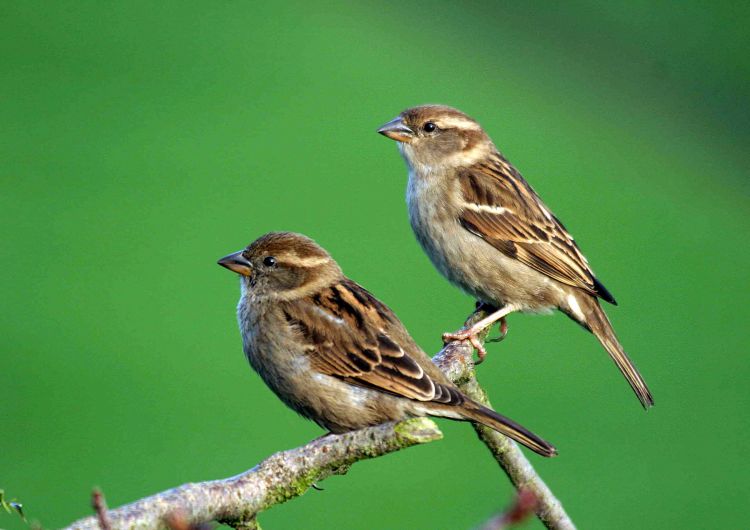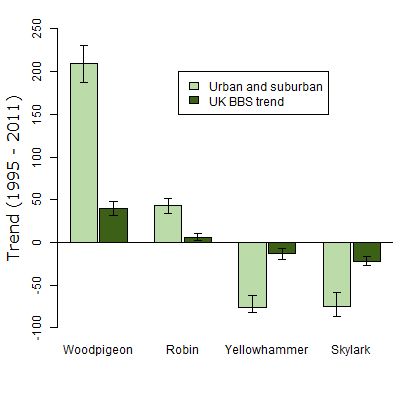It is well known that trends in bird populations are not the same everywhere, but may vary with location and habitat. We are therefore developing techniques to use BBS data to describe variation in bird population trends between habitats. Not only does this provide valuable information for individual species, but helps is to better understand the environmental changes occurring in the countryside and what might be driving particular population declines
trends between different habitats
Before the introduction of the BBS it was not possible to look at national trends in breeding birds within broad habitats other than farmland or woodland, as these formed the core of Common Birds Census (CBC) plots. Because BBS has much greater coverage across all habitats, it is possible to examine how population trends of species differ between the different habitats in which they are found. We know that declines in farmland birds were indicators of wider biodiversity declines across intensively managed farmland. What might other trends in bird populations be telling us?
In previous work based on the first 13 years of the BBS we described variation in population trends of 23 red- and amber-listed species of conservation concern in the UK. In many cases, the direction of the trend differed, indicating that the abundance of some species may be increasing in some habitats, but declining in others. The greatest variation in the slope of the trend between habitats was seen in Cuckoo, which appeared to be increasing on lowland semi-natural grassland and heathland, but declining on farmland and some woodland habitats. House Sparrows also varied widely in their trends across habitats, undergoing a steep decline in urban and suburban habitat between 1994 and 2006, while increasing in rural settlements over the same period.
We have now extended this methodology to produce trends for more species, with trends of 68 species reported in BirdTrends using BBS data up to 2012. Many of the patterns identified in our earlier work are evident in this larger analysis. For example, Cuckoos have continued to decline in most habitats, but population trends have remained fairly stable in lowland semi-natural grassland and heathland, while for House Sparrows the contrast between increasing populations in rural settlements and declining populations in urban and suburban habitat remains. In general population trends of a number of species were lower in urban and suburban habitats, with strong declines open country species such as Skylarks and Yellowhammers, which could be due to the loss of urban wastelands. Not all species in urban and suburban areas are doing badly, with populations of Woodpigeons and Robins increasing considerably faster in urban and suburban areas than in other habitats.
Some of the differences in population trends between habitats will be due to different pressures and opportunities acting on species in different habitats. Other differences will reflect wider pressures acting on species, with declining species retreating into their preferred habitats and increasing species spreading out into new habitats. Understanding how these different process influence population trends will help us better predict how birds respond to environmental change.
Although we do not plan to update these trends every year, they will be updated at regular intervals, allowing us to continue to monitor how bird populations change across habitats.

